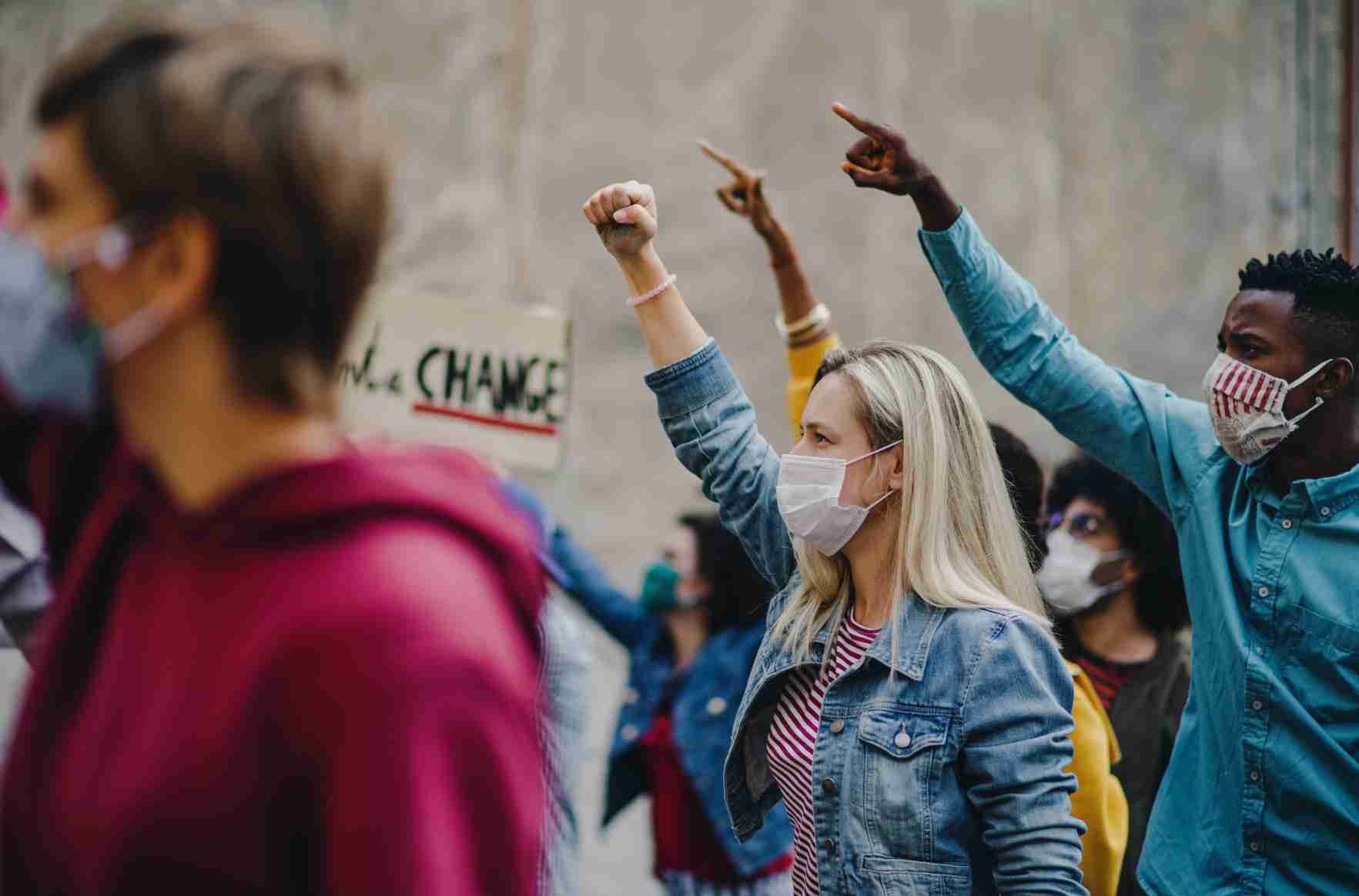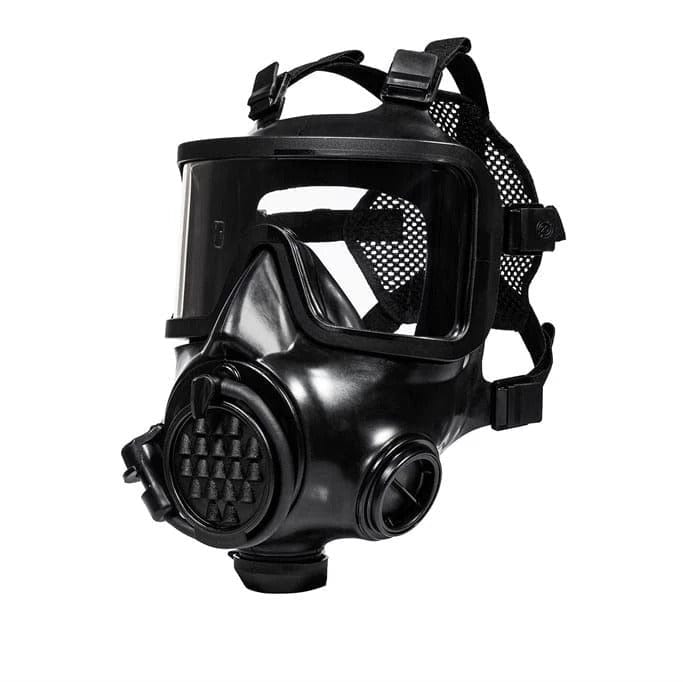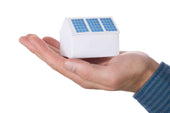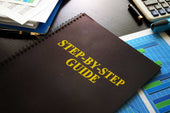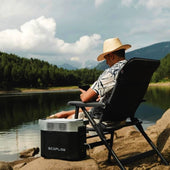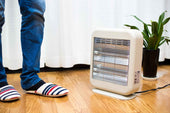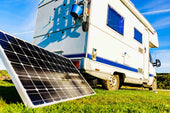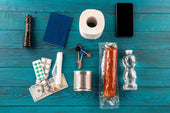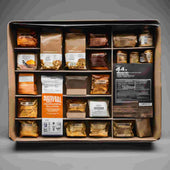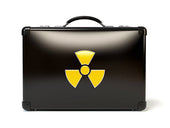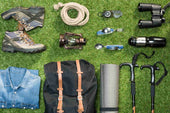Civil Unrest: Potential Threats in Difficult Situations

Your home should be a safe haven, even when the world outside seems unpredictable.
Civil unrest can erupt overnight, leaving neighborhoods in shambles and putting people and property at risk.
Whether it's a protest that turns violent, looting on the streets just a block away, or even larger-scale turmoil, you may feel helpless if you're unprepared.
The fact is, hoping it won't happen isn't enough. You need to take action to protect your home and loved ones.
With civil unrest, it's not about fear but preparing and having peace of mind when defending your own home.
Be ready to secure your property, protect your family, and avoid any situation that will harm you from taking unnecessary risks.
Strengthening doors and windows to make new surveillance systems are all small measures that make up a lot.
Establishing a well-thought-out family safety plan, supplies, and an understanding of appropriate responses in tension-filled situations or specific scenarios should top everybody's checklist.
This guide outlines practical, straightforward steps to help you prepare for the unknown. You will learn how to better fortify your house's defenses, create a plan for your family in case of an emergency, and stay informed during a crisis.
Being prepared means not expecting a disaster but preparing yourself to head into it.
When unrest strikes, preparation is always your best defense. Let's take the first steps together.
Understanding Civil Unrest
Civil unrest is a big, disruptive event coming from protests, riots, looting, or violent demonstrations.
These often occur in urban cities, neighborhoods, or near governmental buildings and pose threats to homes and businesses.
An example could be a peaceful protest over social or political issues that turns violent, with acts of vandalism, blocked streets, and threats to property and safety.
In these cases, obtaining information and preparing your home will be essential to safeguard your family and possessions.
I. Common Causes of Civil Unrest
A political, economic, or social issue often brings about civil unrest.
Examples include a disputed election, high unemployment, or a movement that demanded justice and equality.
At such times, even peaceful demonstrations can become violent riots. Lacking resources or a slow response from the authorities, such as local police, can escalate the situation.
Crowds behave erratically, and volatile situations place families and property at risk.
II. Risks to Personal Safety and Property
Civil unrest is a very serious and unpredictable threat.
Protesters, looters, or even violent individuals may target homes by breaking windows, damaging doors, or even trying to break into the house.
Family members may be in danger if the riots spill over into residential neighborhoods and raise the fear and urgency of the situation.
Keeping calm and taking proactive steps to secure your home is important to ensure safety.
Defend your house against civil disorder by hardening entry points, such as the doors and windows, putting a reliable security system in place, and creating a safe room with necessary emergency supplies such as an aid kit, fire extinguisher, and other essentials.
Keep informed with the news, and become situational aware, watching for emerging threats.
Collaborate with neighbors to build a collective response plan while carrying non-lethal self-defense tools like pepper spray to protect in case of need.
Proper preparation for the scenario helps to maintain safety and control and ensures peace of mind during challenging situations.
III. Preparing Your Home for Potential Threats
When civil unrest hits your neighborhood, it is really destructive and can even risk your home and your close family members.
It is of extreme importance to learn how to protect your home against civil unrest so that everyone is safe.
Proper preparation can minimize the risks of damage and ensure your family's safety.
This section details practical steps for preparing your home for potential threats, from assessing vulnerabilities to securing essential supplies.
A. Evaluating the Vulnerabilities of Your Home

The first thing to do is evaluate your home's vulnerabilities in preparation for civil unrest. Inspect the entry points, namely the doors, windows, and garage.
These are the common entry points where intruders or looters could attempt to access your property.
Find the weak spots that can be easily exploited. Are the doors sturdy enough? Do the windows have locks, or are they easy to break into?
A basic home security system with motion detectors is also important to check for coverage, but don't forget about manual barriers like deadbolts.
Check the surroundings, too. Is your property visible to the street or surrounded by foliage that may offer cover for any intruder?
The most efficient deterrent against any criminal is an open, bright property.
Seclusion or seclusion of the house may put it at more risk for unwanted attention during any civil disorder period.
B. Improving Ingress/Egress Defenses
Having evaluated your home's vulnerabilities, you can now start fortifying your physical security barriers.
Doors should be strengthened using solid and heavy materials, like solid wood or steel, with good deadbolt locks on each of them.
A security system with sensors in all entry points, such as doors and windows, would also be helpful.
For windows, a film resistant to shattering can be used, which might prevent glass from breaking easily due to violent protests or a house invasion. Additional protection can be achieved by adding metal bars to windows.
If your area is a hotbed for unrest, erecting fencing or even gates around the property can significantly limit access, making it challenging for intruders to gain access to the house.
Essentially, this helps make the environment safe for your family while denying easy access paths to protesters or looters who may try to incite chaos or take advantage of the situation.
C. Lighting and Surveillance
Adequate lighting and surveillance are critical components of securing a home, especially during civil unrest.
Motion-sensor lights around a house can become a deterrent to whoever is trying to come around your house in the dead of night.
If someone intends to gain access to your house or even get close to your door, such lights will alert you and create an easy message that they are under surveillance.
Install cameras at all entry points, from front and back doors to windows and gates.
Install 24/7 surveillance cameras that can be monitored remotely so you will always know what's happening around your house, whether you're indoors or outdoors.
Visible cameras send a message well to potential intruders: this house is protected.
The importance of such visible deterrents cannot be underestimated.
When protesters or criminals know that a particular property is properly secured, the chances of that property being targeted are reduced.
This added security helps you remain in control over your property at times of social unrest and disorder.
D. Securing Necessities
Securing necessary supplies is another crucial step in preparing for civil unrest. First, you need to stockpile food, water, and medical supplies.
This will help ensure that you and your family are not forced out of your home during critical times because you have enough non-perishable food and drinking water for several weeks.
Don't forget to include items like an aid kit, medications, and a fire extinguisher—tools that could be vital in the event of an emergency.
You should also think of back-up as a generator or solar-powered lights.
In case the power goes out, you can still have your basic functions lit up and still keep your security system running.
Without these, you may find yourself vulnerable in the dark when violence erupts, and normal services are disrupted.
Another way to enhance your security is to have self-defense tools, including pepper spray.
Having a non-lethal defense option to carry around increases your chances if you need to protect yourself during a protest or at home.
A good, safe room is another very important feature of home security.
It's one room sealed off easily that can be stocked with enough supplies to retreat there for some time, waiting for the situation to change.
That means you, your family, and all your neighbors can wait it out while the situation passes and becomes less dangerous for you.
Creating a Personal and Family Safety Plan

A well-structured personal and family safety plan can guide you through turmoil and threats when civil unrest arises.
It can protect your loved ones and valuables, such as in violent demonstrations, home invasions, or sudden evacuations.
Follow these steps to create a detailed personal and family safety plan and be prepared for whatever situation may arise.
Communication Plan
The very first step in every emergency plan is to establish a communication system that would effectively tie up family members.
In the midst of full-blown civil unrest, keeping in touch is by no means easy; there is going to be a need for a good way of contacting one another.
Develop a plan to include emergency phone numbers, an out-of-area contact person, and a plan to check in periodically.
In case your primary communication channels become unavailable due to power cuts or over-capacity cell towers, backup comeback-option equipment may include two-way radios.
Such equipment may prove especially useful when cell coverage is unreliable, and one may need to reach neighbors, family, or friends.
These devices are the simplest yet most reliable means of communication, keeping contact lines open during chaos when normal channels are severed.
Safe zones in the home
This is important when civil unrest breaks out or someone tries to invade your home. A safe room is just that- an area of safety that can be found at home.
In times of emergency, you and your family members will be able to go there to be secure.
This room must be some distance away from those entrance points, provide just one-way access or exit, and be secure from the rest of your home.
Store up supplies in the safe room. These include a first aid kit, water, food, and other tools for defense, such as pepper spray.
In addition, bring a fire extinguisher and any back-up, including a battery light or solar-powered charger.
And if you really expect a worst-case scenario, be sure that your safe room is without any telltale signs of being your safety shelter, in case this is what would make it an obvious target for burglars.
Emergency Evacuation Plans
While securing your home, you also want to have a safety evacuation plan in case things get too dicey.
Determine at least two different escape routes from your house, including windows or back doors, in case the main exit is blocked.
Practice using these routes regularly with your family so everyone knows exactly what to do if they need to leave quickly.
Besides these escape routes, make sure to have a "go-bag" for everyone in your household.
This is a bag in which you pack the necessities that you might need to survive for at least 72 hours: water, non-perishable food, a first aid kit, medications, and all other critical items, such as identification, money, and an emergency blanket.
Having these on hand will allow you to evacuate safely in the event of civil unrest; you won't have to race out to gather supplies that you would most likely need in emergency situations.
Training and Drills
Doing practice runs is the right way to prepare your family in case of civil unrest.
Be sure to conduct drills regularly, simulating evacuation from the house and hiding in the safe room during a house invasion.
Everyone involved should understand their role, including staying calm, gathering in the safe zone, and more.
Family members should learn basic self-defense moves.
You don't have to be a competitive shooter or an expert in security, but learning some simple self-defense moves will help you and your loved ones defend yourselves in case of a critical situation.
Simple techniques such as escaping a hold, using pepper spray, or blocking a potential strike will give you the upper hand in protecting your home and your family.
Managing Interactions During Civil Unrest

While civil unrest prevails, managing interactions with people will make all the difference between keeping you and your loved ones safe or otherwise.
Whether it is to escape danger, de-escalate a situation, or collaborate with your community, staying calm and prepared can make a big difference.
Here are some practical steps to manage various scenarios that may arise under unrest:
A. Staying Informed
The most important act during civil unrest is to make sure you are educated about what happens.
Monitor both local news media and social platforms for information from people who develop and follow issues as they build up.
Everyone usually checks up on TV/radio broadcasts or follows the status of protests and demonstrations, alongside checking the different road closures through social media and whether they cut across your locations.
Social media immediately tells you the areas where this unrest is actually taking place and what to avoid at which specific times.
In addition, if possible, use police scanners or emergency alert apps to receive direct notifications from the authorities.
These resources will give you essential information about the security situation in your neighborhood and can inform you of any government responses, such as curfews, that might be put in place.
Staying informed helps you make timely decisions, whether it's staying put, retreating to your safe room, or contacting friends and family members for updates on their safety.
B. Dealing with Aggressors
Again, if aggressors or aggressive protestors confront you, the best course of action is to avoid any form of confrontation if at all possible.
Emotions run high during violent demonstrations or civil disorder-things can pop loose with minimal provocation. Keep calm.
When confronted, keep calm and not act in a manner that may prompt aggression. Passive body language, such as standing with your hands open and by your side, indicates you don't pose a danger.
In case the tension increases, de-escalation techniques, like speaking in a slow, gentle manner, may help resolve the situation.
Yelling or making abrupt movements can be misconstrued as a challenge.
The use of self-defense becomes inevitable in some circumstances but only in response to actual immediate danger.
Tools to carry include pepper sprays or a fire extinguisher to enable one to defend oneself, although non-lethal.
Remember, your main intention is to stay safe, ensure the safety of your family members, and not confront anyone.
C. Establishing Community Support
During the unrest, do not isolate yourself.
Working with your neighbors can make a stronger and safer environment for everyone.
You can improve your home security by sharing resources and information and even helping watch each other's properties.
Create a plan with your neighbors to protect their homes when there are issues. It might involve checking on one another, providing supplies for a common pot, or coming up with shifts to watch over the neighborhood.
You may also need to pool critical resources like medication or food if you anticipate being cut off from services and supplies during civil unrest.
Community support is one of the strongest tools for keeping safe.
It helps to create a circle of trusted people around you so that you can be sure that your family and your property will be safe and that you'll have the backup you need should things escalate further.

